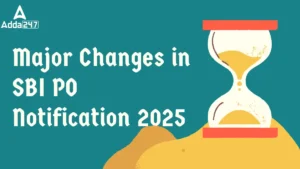Reasoning Questions for SBI PO prelims 2019:
Directions (1-5): Study the following information carefully and answer the questions given below:
There are eight students i.e. A, B, C, D, E, F, G and H who sit around a circular table and facing away from the centre. They all study in different branches of engineering i.e. IT, ECE, EE, EEE, ETC, CE, ME and CSE.
The one who is in ECE sits opposite to the one who is in CE.E sits just right of the one who belongs to ETC. The one who belongs to EEE sits immediate left of F. There are two friends sit between H and the one who belongs to CSE. H sits 2nd right of B who is in ECE. The one who sits 2nd right of G, is A. A sits 2nd left of B and sits opposite of the one who is in ETC. C and the one who is in EE, are neighbors of G but C is not in EE. The one who belongs to IT is neighbor of the one who is in ETC. D is not neighbor of A and F is not in ME.
Q1. Who among the following sits 2nd left of the one who is in ME?
Q2. Who among the following is neighbor of F?
Q3. How many students sit between the one who belongs to CSE and ECE, counting clockwise from the one who belongs to CSE?
Q4. What is the position of C with respect to F?
Q5. Who among the following sits immediate left of the one who is in CE?
Directions (6-10): In the following questions, the symbols @, ©, $, % and δ are used with the following meaning as illustrated below:
‘P © Q’ means ‘P is either greater than or equal to Q’.
‘P % Q’ means ‘P is either smaller than or equal to Q’.
‘P @ Q ‘ means ‘P is neither smaller than nor greater then Q’.
‘P $ Q’ means ‘P is smaller than Q’.
‘P δ Q’ means ‘P is greater than Q’.
Now in each of the following questions assuming the given statements to be true, find which of the two conclusions I and II given below them is/are definitely true. Give answer
Q6. Statements: H © T, T % M, M δ F
Conclusions :
I. F $ T
II. H δ M
T ≤ M …(ii);
M > F …(iii)
Q7. Statements: B @ N, N © T, T $ K
Conclusions :
I. T @ B
II. T $ B
N ≥ T …(ii);
T < K …(iii)
Q8. Statements: R $ J, J δ F, F % H
Conclusions :
I. H δ J
II. R $ F
J > F …(ii);
F ≤ H …(iii)
Q9. Statements: J δ D, D @ N, N % F
Conclusions :
I. J δ F
II. F © D
D = N …(ii);
N ≤ F …(iii)
Q10. Statements: B δ T, T $ H, H @ M
Conclusions :
I. M δ T
II. B δ H
T < H …(ii);
H = M …(iii)
Directions (11-13): Following questions are based on the information given below:
‘P × Q’ means ‘P is father of Q’
‘P – Q’ means ‘Q is sister of P’
‘P + Q’ means ‘P is mother of Q’
‘P ÷ Q’ means ‘Q is the brother of P’
Q11. In the expression B + D × M ÷ N, how M related to B?
Q12. Which of the following represents ‘T’ is brother of ‘R’?
Q13. Which of the following represents ‘R’ is niece of ‘M’?
Q14. The position of how many alphabets will remain unchanged if each of the alphabets in the word ‘TRANSTROMER’ is arranged in alphabetical order from left to right?
Q15. What will come in place of question-mark (?) in the following series?
PQ AE ST IO ?






 The Hindu Review October 2022: Download ...
The Hindu Review October 2022: Download ...
 Major Changes in SBI PO Notification 202...
Major Changes in SBI PO Notification 202...
 SBI PO 2024-25 Notification Out, Exam Da...
SBI PO 2024-25 Notification Out, Exam Da...




